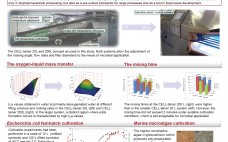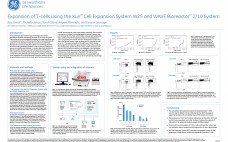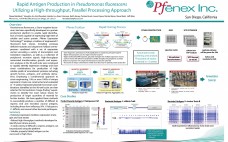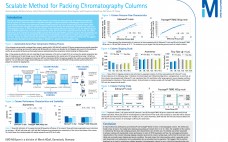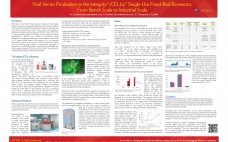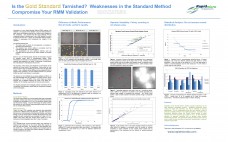Development of a high-performance and robust fed-batch process for recombinant Chinese Hamster Ovary (CHO) cell lines presents challenges in light of the diverse nutritional requirements observed with different clonally derived cell lines as well as the varied production phases. To address these challenges, we will discuss an innovative strategy of media, feed, and process development that has been developed at FUJIFILM Diosynth Biotechnologies (FDB). The efficiency and effectiveness of this strategy have been well demonstrated in multiple mAb-producing CHO cell…
2014 Collection
The Importance of Thresholding in Imaging Analysis of Protein Aggregates
Dynamic imaging particle analysis (DIPA) shows much greater sensitivity to transparent particles, such as protein aggregates, than light obscuration can. While not yet fully accepted in industry compendia, DIPA is being used increasingly in the formulation process for characterization of sub-visible particulates in biologics. DIPA measures particle size and shape by first creating a binary image based upon a defined threshold from the background value for each pixel in the image. The resulting binary image is used for all particle…
Microbial Cultivation In Different Scales in the CELL-tainer® Rocking Single-use Bioreactor
Single-use bioreactors are applied in the biopharmaceutical industry for mammalian cell culture processes. The low gas-liquid mass transfer coefficient generally achieved in these systems does not allow for the compatable application of microbial processes in these bioreactor systems. The CELL-tainer® technology combines a vertical and horizontal movement in a rocking bioreactor concept, so that the turbulence and power input is intensified. In this system, mass transfer rates comparable to stirred tank reactors are achievable. Thus, volumetric oxygen transfer rates (kLa)…
Expansion of T-cells using the Xuri Cell Expansion System W25 and WAVE Bioreactor 2/10 System
Immunotherapeutics include drugs and biologics that render therapeutic benefit by harnessing the power of the immune system. The promise of immune-mediated therapies is to target specificity with a consequent reduction in off-therapeutic effects. Immunotherapeutic products can be classified broadly into (1) active immunotherapy (therapeutic vaccines), (2) adoptive cellular immunotherapy (transfer of immune cells, genetically modified T-cells or precursor cells) or (3) passive immunotherapy (antibody or receptor ligand administration). Recent scientific advances have led to clinical trials of both active and…
Rapid Antigen Production in Pseudomonas fluorescens Utilizing a High-throughput, Parallel Processing Approach
Pseudomonas fluorescens, a Gram-negative bacterium, has been specifically developed as a protein production platform to enable rapid identification of strains capable of expressing high titers of soluble and active protein. PfÄnex Expression Technology (TM) employs a toolbox of engineered P. fluorescens host strains, including protease deficient mutants and chaperone/ foldase overexpressors combined with a set of expression vectors encoding a variety of transcription and translation regulators, as well as a collection of periplasmic secretion signals. High-throughput automated transformation, growth, and…
Scalable Method for Packing Chromatography Columns
Currently the bio-pharmaceutical industry is heading towards cost cutting, time saving and single use manufacturing approach. This has opened up a whole new market for disposable technologies. Pre-packed disposable chromatography columns are a best fit for preclinical and clinical stage Monoclonal Antibody (mAb) production and vaccine manufacturing processes which require quick turnaround times and aggressive validation respectively. This work describes development of pre-packed and ready to use chromatography columns to meet this need in the industry. A robust packing method…
Enhancing Efficiency and Economics in Process Development and Quality Control of Biotherapeutics
Analytical techniques that measure protein quantity and quality are used in nearly all stages of research, process development, quality control and manufacturing of biotherapeutics. UV spectroscopy, ELISA and HPLC have been in use for decades for protein quantitation in physiological and process samples, and continue to be the workhorses despite their many limitations. Biopharmaceutical companies have enthusiastically adopted Pall ForteBio’s Octet® systems due to their high throughput capabilities, decreased sample preparation requirements, and low cost of operations. The Octet systems…
Continuous Bioprocessing: A CMO’s Perspective
The maturation of many process industries is marked by transition from batch to continuous processing. Often this move to con-tinuous processing determines the winners in the industry. Will the bioprocess industry go the same way? The analogy is often drawn to the chemical industry where continuous processing is widely applied. Although available for many decades continuous bioprocessing is not yet a mainstay of the industry. Currently there is a ground swell of feeling within the bioprocess industry that the time…
Viral Vector Production in the Integrity® iCELLis® Disposable Fixed-bed Bioreactor from Bench-scale to Industrial Scale
Recombinant viruses (e.g. lentivirus and adeno-associated-virus) can be used as human gene therapy vectors. They are mainly produced in adherent cell cultures (e.g. HEK293T, A549, VERO) in Roller Bottles or multiple-tray-stacks using either transient transfection or infection strategies. Therefore, the Integrity® iCELLis® (ATMI LifeSciences) line of bioreactors offers a new production alternative with stronger process controls and ease of scale-up. The iCELLis bioreactor is designed for adherent cell culture applications. Cells grow on microfibers carriers packed in a fixed-bed…
Is the Gold Standard Tarnished? Weaknesses in the Standard Method Compromise Your RMM Validation
Introduction of a new Rapid Microbial Method (RMM) requires a full validation. The purpose of the validation is to prove that equivalent or better results are obtained using the new method when compared to the compendia. One assumes that the result obtained with the compendial method is absolute and is the âGold Standardâ by which to compare the new test. In reality, the compendial method exhibits a number of weaknesses that compromise the integrity of the validation. The standard requires…



